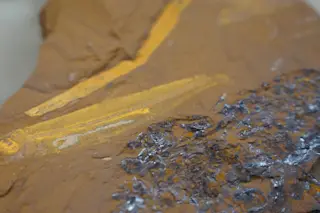A newly described ichthyosaur fossil was found with up to eight offspring still in utero. (Credit Nobumichi Tamura) Dinosaurs may hog the Mesozoic spotlight, but some of the neatest finds of recent note in paleontology come from under the sea: a very pregnant ichthyosaur and the partial remains of another that was a supersized specimen (think blue whale territory). A quick ichthyosaur refresher: these marine reptiles show up in the fossil record and explode in size and number during the Triassic, get smaller but are still plentiful in the Jurassic (201-145 million years ago) and then die out during the Cretaceous, millions of years before the mass extinction that offed the dinosaurs. Though the earliest ichthyosaurs were more slithery sorts, as they evolved they developed a basic built-for-speed body shape while at the same time diversifying into different species that specialized in various niches (although determining exactly how many species ...
Double Dose Of Ichthyosaur Updates: Big Daddy and Octomom
Discover the fascinating ichthyosaur fossil showcasing up to eight young in utero, shedding light on these ancient marine reptiles.
More on Discover
Stay Curious
SubscribeTo The Magazine
Save up to 40% off the cover price when you subscribe to Discover magazine.
Subscribe













